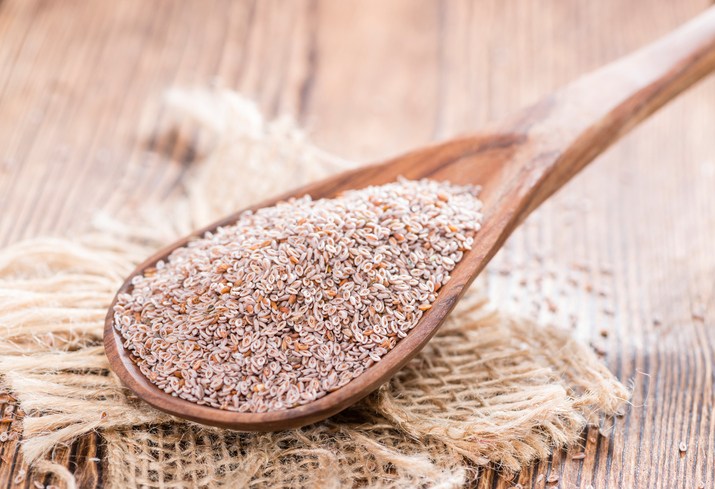16 Useful Tips to Help Reduce the Amount of Calories You Eat
Excessive calories in the body can lead to some undesirable health conditions that nobody ever want to know about. The problem is, most of your favorite foods that you cannot do without contain the largest calories.
But the good news is, you can really enjoy your favorite meals to the fullest once you know how to modify their combination wisely in order to reduce the quantity of calories you invest in your body. Below are the tips and advice to help you achieve that.
(1) The key principle is to select foods with quality calories - low-calories, high-nutrient foods from across the variety of foods available to you. Avoid refined, processed foods as much as possible and include more natural, unrefined products in your diet. If you do buy convenience meals, select those that are low in calories and fat.
(2) Reduce the amount of fat in your diet. Dietary fat appears to play several roles in the development of obesity. It appears to trigger your appetite which can lead to an increase in your caloric intake.
(3) Reduce the amount of simple refined sugars in your diet. You can achieve this by reducing the amount of sugar you add directly to foods and limiting your consumption of highly processed foods that may add significant amount of sweeteners. Artificial sweeteners may be helpful.
(4) In many cases, simply reducing the fat and sugar content in your diet will save significant amount of calories.
(5) Milk exchange products are excellent sources of protein but may contain excessive calories unless the fat is removed. Use skim milk, low-fat cottage cheese, low-fat yogurt, and nonfat dried milk instead of their high-fat counterparts like whole milk, sour cream, and powdered creamers.
(6) The meat exchange products are sources of high-quality protein and many other nutrients but also may contain excessive fat calories. Use leaner cuts of meat such as flank steak, pork tender loin, and 96 percent fat-free hamburger.
Fish, chicken, and egg whites are excellent low-calorie meat exchange, although egg yolks are very high in cholesterol.
Trim away excess fat; broil or bake your meats to let the fat drip away. If you eat in fast-food restaurants, select foods that are low in fat, such as grilled chicken, lean meats, and salads. Avoid the high-fat foods, which normally contain 40-60 percent fat calories.
(7) The starch-bread exchanges are high in vitamins, minerals, and fiber. Use whole-grain breads, cereals, brown rice, oatmeal, beans, bran products, and starchy vegetables for dietary fiber.
Limit the use of processed grain products that add fat and sugar. Substitute products low in fat, such as bagels, for those high in fat like croissants.
(8) Foods in the fruit exchange are high in vitamins and fiber. Select fresh , whole fruits or those canned or frozen in their own juices. Avoid those in heavy sugar syrups. Limit your intake of dried fruits which are high in calories. Eat at least one citrus fruit daily.
(9) The vegetable exchange foods are low in calories yet high in vitamins, minerals, and fiber. Select dark-green leafy and yellow-orange vegetables daily. Low calorie items like carrots, radishes, and celery are highly nutritious snacks for biting. Fruits and vegetables may provide bulk to the diet and a sensation of fullness without excessive amounts of calories.
(10) Use little amounts of high-calorie fat exchanges like salad dressings, butter margarine, and cooking oil. Don't prepare foods in fats, such as with frying. Use nonstick - slippery - cooking utensils. If necessary, substitute low-calorie or fat-free dietary versions instead.
(11) Beverages other than milk and juices should have no calories. Take plenty of fluids, for it helps create a sensation of fullness during meal. Water is the recommended fluid, although diet drinks and unsweetened coffee and tea may be used.
(12) Limit the amount of alcohol you drink. It's high in calories and zero in nutrient value. One gram of alcohol is equal to 7 calories, almost twice the value of protein and carbohydrate.
(13) Reduce the quantity of salt you eat to that which occurs naturally in your foods. Try to use dry herbs, spices, and other non-salt seasonings as substitutes to flavor your food.
(14) Instead of two or three large meals a day, eat five or six smaller ones. Use low-calorie, nutrient-dense foods for snacks. This may help in other ways possibly by minimizing the release of insulin which assists in the storage of fat in your body.
(15) Only cook and serve small portions of food for meals. The temptation to overeat may be removed.
(16) Learn to substitute low-calorie foods for high-calorie ones. The key to a lifelong weight-maintenance diet is your knowledge of sound nutritional principles and the application of this knowledge to the design of your personal diet.
Finally, beware of the amount of calories contained in any food item that you buy, and in foods that you order from fast food shops or restaurants. When cooking, learn how to combine foods in healthful ways in order to reduce the amount of calories you eat.
-
Stop Emotional Eating
North Americans spend billions of dollars on diets in an attempt to
-
How To Stay Away From Health Club Rip-Offs In Georgetown
Those looking for a Georgetown health club probably are envisioning th
-
Get Fast & Healthy Weight Loss
No one wants to be overweight. Apart from social stigma and embarrass
-
How to Remove Stomach Fat
Belly fat increases the risk of inflamma
-
Weight Loss Tips: Let Your Goals Shine Brightly!
Anyone who had done weight loss knows that to lose weight you need
-
5 Helpful Things to Do to Start Your Personal Fitness Program
The most common challenge that people I talk to face is how you can in
- DON'T MISS
- Green Tea Weight Loss: More Than An Antioxidant
- 7 signs and symptoms not to ignore
- 10 (Very) Common Reasons Why You Are Not Losing Weight
- Are There Foods To Avoid When Trying To Lose Weight?
- The Clock And The Mirror
- Weight Loss Goals - Tips and Ideas for Building a Successful Plan
- Tips For Managing Multiple Ebay Auctions.
- The Mystery To Burning Body Fats
- Hoodia Not Working For You Heres What To Do
- Effective Fat Loss Tips to Burn Fat Fast




